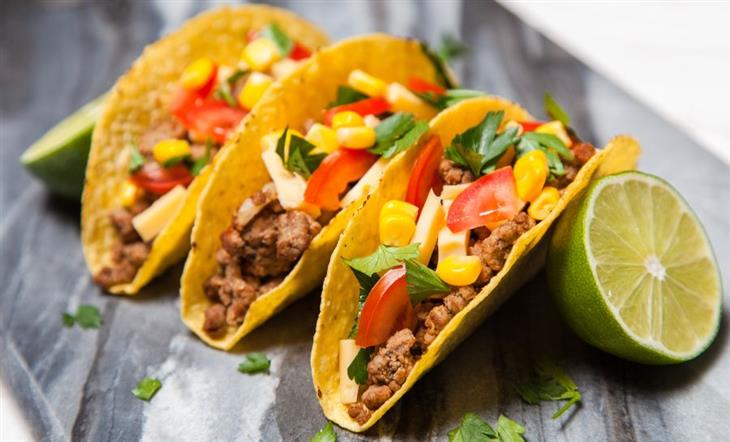
In order to guarantee the healthiness of our meals, it is necessary to select the ingredients and prepare them ourselves. However, there are times when we all need a break and someone else to take care of the cooking for us. Fortunately, food delivery services have greatly improved in recent years. As a result, many people now opt for takeout more frequently due to its speed and accessibility. Not to mention, it also saves us from doing dishes and satisfies our taste buds with delicious flavors. But does this mean that ordering food from restaurants leads to less healthy eating? Well, it depends on what you choose from the menu.
If you wish to ensure that your future food deliveries consist solely of nutritious options or if you generally prefer healthy dining in restaurants, we have compiled some recommendations for you regarding what to look out for in various international cuisines.

Thai cuisine boasts a diverse array of dishes featuring healthy vegetables and lean meats. However, caution must be exercised as certain dishes can be high in oil content and should therefore be avoided.
Summer Roll: This starter won't greatly impact your diet, as each roll typically contains slightly under 140 calories. These calories primarily come from vegetables like lettuce, carrot, cucumber, and noodles - all wrapped together in a rice sheet. It is advisable to consume them without the sauce, which often contains high levels of salt and sugar. On some menus, this dish may be referred to as a "spring roll", but it is important to ensure that they are not fried or made with flour.
Papaya salad: This salad commonly includes beans, Thai chili, and nuts. It showcases a nutritious fruit that is not typically consumed on its own regularly. Papaya contains lycopene - a potent antioxidant known for repairing cellular damage and preventing cancer.
Tom Yum Soup: A basic serving of Tom Yum soup only amounts to approximately 100 calories per cup. It features vegetables such as onion, garlic tomato mushrooms along with flavorful and tangy spices like lemongrass and kefir lime leaves. This soup makes for an ideal healthy choice on cold winter days.
Chicken Satay: These skewers of grilled chicken are typically accompanied by a peanut sauce. This dish is low in fat and high in protein, making it a great option for those looking to feel satisfied for an extended period of time. Instead of dipping the chicken directly into the sauce, it is suggested to pour some onto your plate. It's important to note that 2 tablespoons of sauce contains approximately 80 calories and a relatively high amount of salt, so it's advisable not to consume all the sauce at once.
Thai Chicken (Larb): This particular dish consists of a flavorful chicken salad made with cilantro, mint, onion, chili pepper, and lime juice. To enjoy this dish fully, serve it with white rice and lettuce. The lettuce can be used as wraps for the salad mixture which adds an extra layer of taste and texture. It is recommended to skip the white rice as it doesn't contribute significantly to your diet; instead opt for brown rice or another similar alternative if possible.
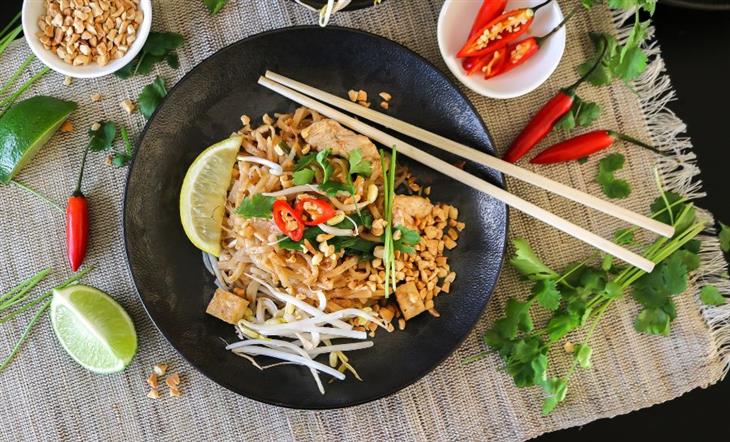
Italian cuisine often features dishes that are calorie-dense due to rich sauces or carbohydrates; however, there are always options available that allow you to maintain balance and make healthier choices by selecting recommended ingredients.
Antipasti: This is an incredibly simple and delicious dish. You can roast eggplants, zucchini, red peppers, and mushrooms with a drizzle of olive oil to create the perfect appetizer. If the antipasti comes in a plate or dish that is swimming in oil and sauce, it's a good idea to transfer it to another dish. This will help you save on calories without compromising the taste or nutrient content of the vegetables.
Minestrone Soup: This soup is packed with goodness as it contains meat, vegetables, and pasta. Typically made with beans, onions, celery, carrots, greens, stock,and/or tomatoes; each restaurant may have its own variation of this soup. However, it will always be healthy and nutritious. The key is to order short pasta made from whole wheat, such as rotini or macaroni, to make it even more beneficial for your health.
Thin crust pizza: Opting for a thinner pizza crust can significantly reduce the calorie and carbohydrate content. It is advisable to choose whole wheat flour as it takes longer to digest, resulting in more stable blood sugar levels. Tomatoes are highly recommended toppings due to their rich lycopene content, which becomes more bioavailable when cooked. Additionally, requesting a reduction in cheese quantity can help minimize the intake of high-fat ingredients.
Pasta Marinara : Many restaurants offer an extensive selection of pasta dishes with various sauces. When choosing, prioritize whole wheat pasta over regular options. Opt for marinara sauce with a hint of olive oil to enhance flavor while benefiting from the tomato sauce's abundant lycopene content. If available, consider pairing your pasta with protein-rich roasted chicken. Cream-based sauces and butter-laden pastas should be avoided, as well as excessive use of fatty cheeses.
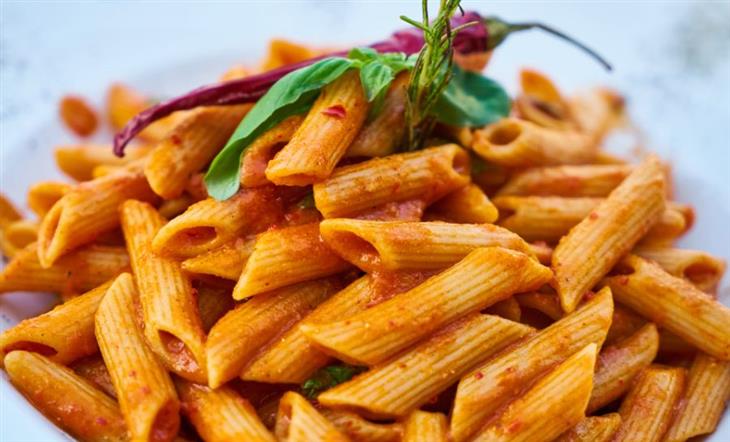
Chinese cuisine is renowned for its health benefits, providing an array of nutritious options that can easily replace unhealthy dishes lacking in nutritional value. By making smarter choices, you can upgrade your meals and enhance the nutrients you consume.
For instance, steamed dumplings are a healthier alternative to their fried counterparts. Although they are made with dough containing carbohydrates, the steaming process helps retain the vegetables' nutritional value. To further reduce salt intake, it's recommended to dip them in chili sauce instead of soy sauce.
Soups are another excellent choice in Chinese cuisine as they tend to be low in calories. Most soups have fewer than 100 calories per cup and make for a satisfying meal option during cold winter days. Opting for stock-based soups such as vegetable or meat-based varieties will help keep you feeling fuller for longer periods.
Chinese cuisine offers numerous healthy options that allow you to enjoy delicious meals while maintaining a balanced diet. By choosing wisely and opting for nutrient-rich substitutes, you can easily elevate your dining experience without compromising on health benefits.
For a main chicken dish, consider opting for the Kung Pao seasoned with chili pepper. It is advisable to choose brown rice over white rice and don't hesitate to include peanuts as they offer various health benefits like fiber content, unsaturated fats, and antioxidants. However, it's important to note that this dish contains a relatively high amount of sodium, so be mindful of your salt intake for the rest of the day.
If you prefer a vegetarian option that still provides protein in your meal, Mapo Tofu is a great choice. This dish is not only delicious but also rich in iron and calcium. The sauce used in its preparation relies on chili pepper rather than excessive amounts of salt and sodium.
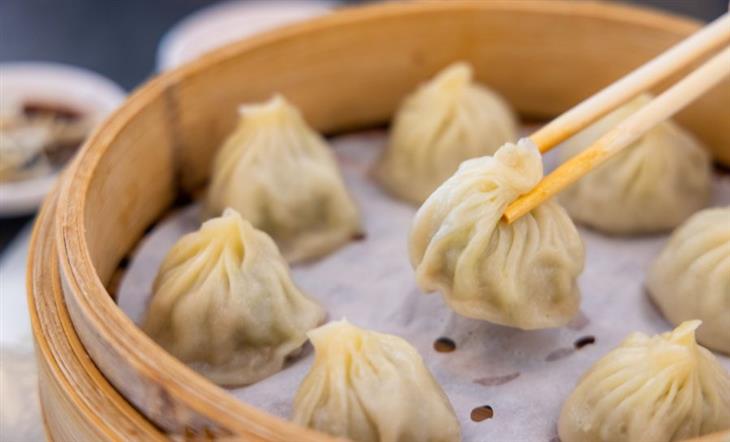
When dining at a Japanese restaurant, sushi is highly recommended; however, it's essential to choose wisely to get those healthier options.
Here are some recommendations:
Salmon and tuna are two of the healthiest fish options for making sushi due to their high omega-3 fatty acid content. However, it is advisable to limit or avoid soy sauces, teriyaki, and mayonnaise as they can increase calorie and fat intake. When it comes to ginger and wasabi, you can consume them with less concern. It's worth noting that some restaurants may not include these condiments in their delivery orders.
If you prefer to avoid raw fish altogether, vegetarian sushi is a great alternative. You can choose from a variety of vegetable fillings such as avocado, cucumber, mushrooms, onions, and asparagus. Toppings like tofu or tamago (Japanese omelette) are also popular options for adding flavor. Avocado is particularly recommended for its healthy fats which are beneficial for the body while enhancing the overall texture of the dish without using cream-based ingredients.
Japanese restaurants offer more than just sushi; they also serve a variety of soups, with miso soup being a standout among the healthy options. This fermented soup is commonly served as an appetizer, but it's important to note that it can be high in sodium. To maintain a balanced diet, it is recommended to consume miso soup in moderation and limit salt intake for the rest of the day.
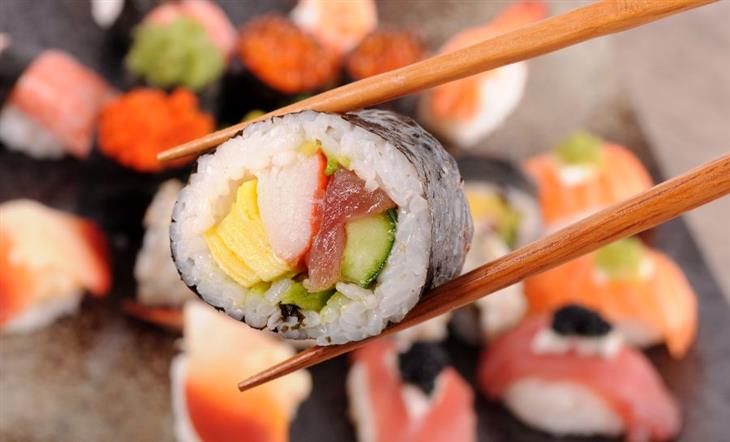
When dining at Mexican restaurants, there are plenty of vegetable-based dishes that can be both healthy and satisfying. However, it's crucial to understand how these dishes are prepared and make wise choices to avoid unnecessary calories.
One excellent option is the burrito bowl, which offers all the delicious flavors of a traditional burrito without the dough wrapper. By skipping this component alone, you can cut roughly 300 calories from your meal. A nutritious burrito bowl typically includes brown rice, black beans, lean chicken or meat pieces for protein content. The dish also features lettuce and salsa sauce which tend to be low in calories. On the other hand, guacamole (avocado) sauce should be consumed moderately due to its higher calorie content.
Taco: in comparison to other items on the Mexican menu, this dish is usually small. For the filling of your taco, you can choose from chicken, lean steak, or grilled fish. Don't hesitate to opt for a corn tortilla - it contains 70% more fiber and less than half the fat found in a flour tortilla.
Ceviche: Made with raw fish marinated in lime and lemon juice, along with onions, tomatoes, and coriander. The acids from the lime and lemon effectively "cook" the fish without requiring any additional oil. This protein-packed dish is low in calories and also provides omega-3 fatty acids.
Fajita: You'll typically assemble this dish yourself. It's recommended to fill it with grilled fish or chicken and add some peppers for added fiber and vitamin C. If each tortilla amounts to approximately 100 calories, consider asking if they can be substituted with corn tortillas instead. Additionally, try not to overindulge in guacamole spread.
Enchiladas are a beloved comfort food in Mexican cuisine. They consist of corn tortillas that are filled with chili sauce or a comparable dip. Whether you opt for chicken or vegetable filling, these flavorful delights typically contain no more than 300 calories. To keep it on the healthier side, it's best to order enchiladas with red or green sauce instead of white sauce. Additionally, requesting less cheese when they fill the tortillas is also advised.
